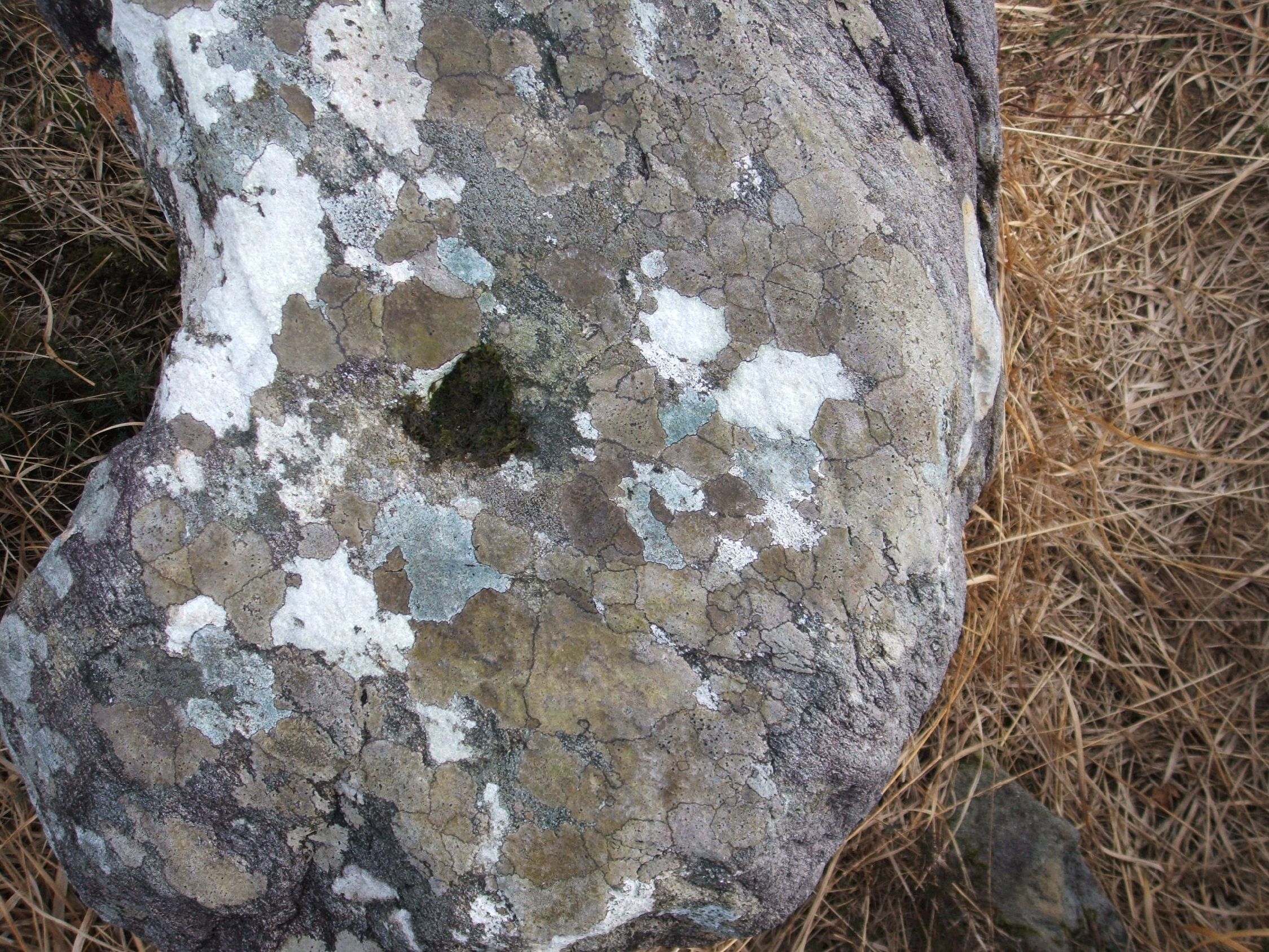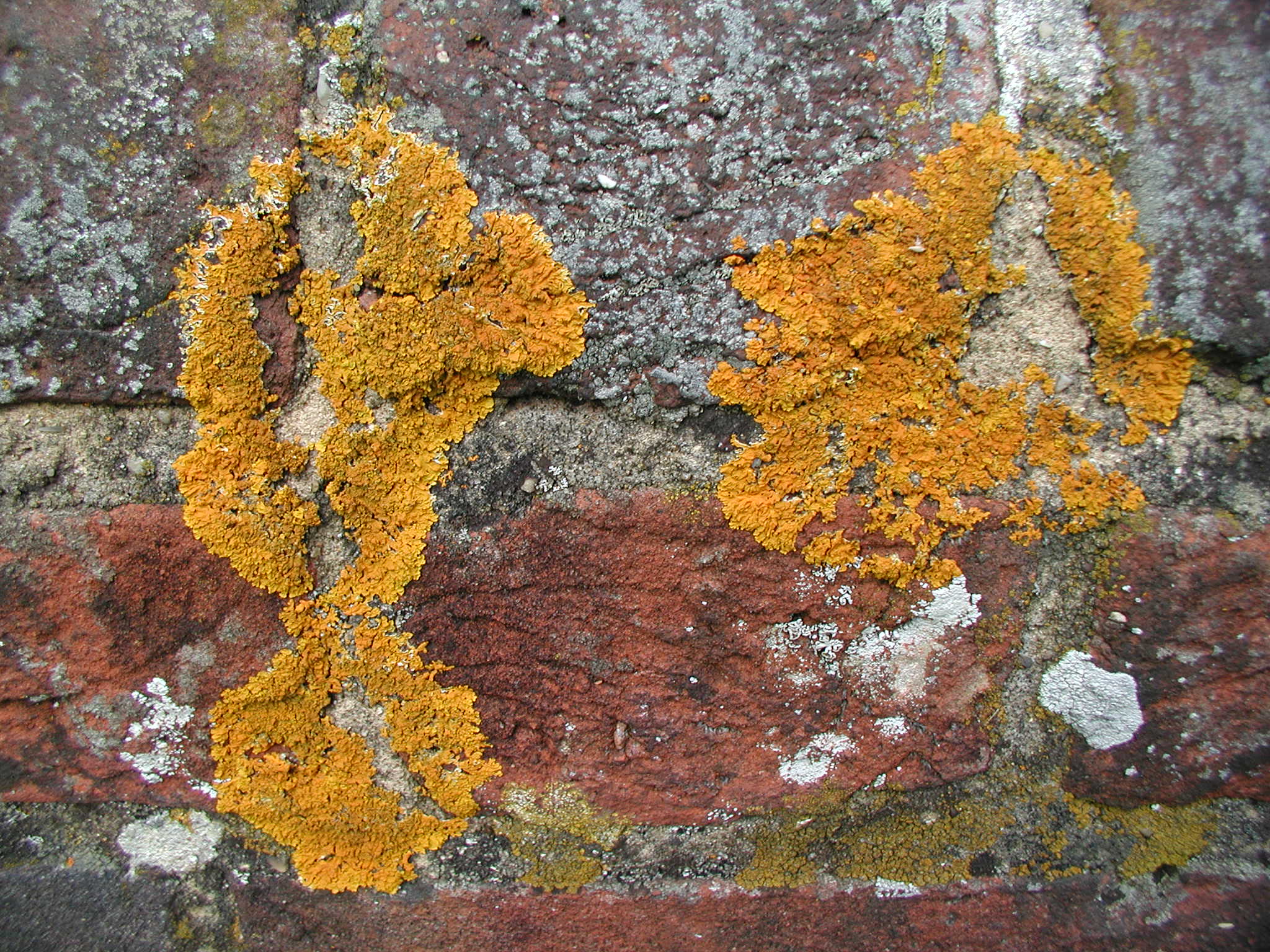|
Rhizocarpaceae
Rhizocarpaceae is a family of lichen-forming fungi; together with the family Sporastatiaceae it constitutes the order Rhizocarpales in the Ascomycota, class Lecanoromycetes. These lichens are primarily rock-dwellers that form thin, paint-like crusts tightly attached to stone surfaces, though some species grow as small scales or radiating rosettes. The family includes five genera found mainly in cool to cold regions around the world, where they colonize exposed siliceous and basic rocks in sunny locations. Most species reproduce through small black disc-shaped fruiting bodies that sit flush with or slightly above the crusty surface, and they often contain distinctive chemical compounds that help with identification. Description Members of the Rhizocarpaceae are mostly rock-dwelling crustose lichens—forming a thin, paint-like layer that adheres tightly to the substrate—although some species grow as small, scale-like or as rosettes whose lobed margins radiate from a ce ... [...More Info...] [...Related Items...] OR: [Wikipedia] [Google] [Baidu] |
Rhizocarpon
''Rhizocarpon'' is a genus of crustose, saxicolous (or sometimes lichenicolous), lichens in the family Rhizocarpaceae. The genus is common in arctic-alpine environments, but also occurs throughout temperate, subtropical, and even tropical regions. They are commonly known as map lichens because of the prothallus forming border-like bands between colonies in some species, like the common map lichen (''Rhizocarpon geographicum''). Taxonomy and phylogeny Together with three small genera ('' Catolechia'', '' Poeltinula'' and '' Epilichen''), ''Rhizocarpon'' constitutes the family Rhizocarpaceae. Historically, ca 389 names have been used. However, many species concepts are ill-defined, many names have been synonymized and new species are regularly being described, so true number of species is not entirely clear as of now, but is estimated to be around 200. In molecular work, the genus has also been shown to be paraphyletic, with closely related genera being nested within ''Rhizoc ... [...More Info...] [...Related Items...] OR: [Wikipedia] [Google] [Baidu] |
Epilichen
''Epilichen'' is a small genus of lichen-forming fungi in the family Rhizocarpaceae. These parasitic lichens live on other lichens, beginning as thin, crust-like patches that may break into small islands or scales, and in some cases produce no visible body at all except for their reproductive structures. They reproduce through black, disc-shaped fruiting bodies that contain distinctive brown spores with a "doughnut ring" appearance, and can eventually take over the space occupied by their host lichen once it dies. Taxonomy The genus was proposed by the American ecologist Frederic Clements in 1909, with '' E. scabrosus'' assigned as the type species. Clements originally classified the genus in the family Patellariaceae. Description ''Epilichen'' species parasitise other lichens and begin as thin, crust-like patches (crustose thalli) that may fracture into island-like or develop minute scales (subsquamulose lobes). In some cases the lichen produces no visible thallus at a ... [...More Info...] [...Related Items...] OR: [Wikipedia] [Google] [Baidu] |
Catolechia
''Catolechia'' is a genus of lichen-forming fungi in the family Rhizocarpaceae. It is a monotypic genus, containing the single species ''Catolechia wahlenbergii''. The genus was circumscribed by German botanist Julius von Flotow in 1850. He did not assign a type species for the genus; ''Catolechia pulchella'' was designated as the type by Gustav Wilhelm Körber in 1855. This species is synonymous A synonym is a word, morpheme, or phrase that means precisely or nearly the same as another word, morpheme, or phrase in a given language. For example, in the English language, the words ''begin'', ''start'', ''commence'', and ''initiate'' are a ... with ''Catolechia wahlenbergii''. Several species that were originally described as a member of ''Catolechia'' have since been transferred to other genera. Examples include: *''Catolechia flavovirescens'' = '' Arthrorhaphis citrinella'' *''Catolechia glomerulans'' = '' Monerolechia glomerulans'' *''Catolechia lactea'' = '' Buellia lac ... [...More Info...] [...Related Items...] OR: [Wikipedia] [Google] [Baidu] |
Poeltinula
''Poeltinula'' is a genus of lichenized fungi in the family Rhizocarpaceae. The genus name of ''Poeltinula'' is in honour of Josef Poelt (1924-1995), who was a German-Austrian botanist (Bryology, Mycology and Lichenology) and was Professor of Systematic Botany at the Free University of Berlin in 1965. The genus was circumscribed In geometry, a circumscribed circle for a set of points is a circle passing through each of them. Such a circle is said to ''circumscribe'' the points or a polygon formed from them; such a polygon is said to be ''inscribed'' in the circle. * Circum ... by Josef Hafellner in Nova Hedwigia Beih. vol.79 on page 330 in 1984. The genus has 2 accepted species; * '' Poeltinula cerebrina'' * '' Poeltinula cerebrinella'' Former species ''P. interjecta'' is now a synonym of '' Melaspilea interjecta'' in the Melaspileaceae family. References Rhizocarpaceae Lichen genera Taxa named by Josef Hafellner Taxa described in 1984 {{Lecanoromycetes-stub ... [...More Info...] [...Related Items...] OR: [Wikipedia] [Google] [Baidu] |
Rhizocarpon Geographicum
''Rhizocarpon geographicum'' (the map lichen) is a species of lichen, which grows on rocks in mountainous areas of low air pollution. Each lichen is a flat patch bordered by a black line of fungal hyphae. These patches grow adjacent to each other, leading to the appearance of a map or a patchwork field. When circular, or roughly circular, the diameter of this lichen species has been widely used to help determining the relative age of deposits, e.g. moraine systems, thus revealing evidence of glacial advances. The process is termed lichenometry. This technique is generally attributed to the work of Roland Beschel in the Alps. Lichenometry is based on the assumption that the largest lichen growing on a rock is the oldest individual. Generally, the five largest lichen thalli diameters are taken, although several statistical methods have been used. If the growth rate is known, the maximum lichen size will give a minimum age for when this rock was deposited. The growth rate curve, a g ... [...More Info...] [...Related Items...] OR: [Wikipedia] [Google] [Baidu] |
Lichenicolous Fungus
A lichenicolous fungus is a member of a specialised group of fungi that live exclusively on lichens as their host organisms. These fungi, comprising over 2,000 known species across 280 genera, exhibit a wide range of ecological strategies, including parasitism, commensalism, and mutualism. They can be found in diverse environments worldwide, from tropical to polar regions, and play important roles in lichen ecology and biodiversity. Lichenicolous fungi are classified into several taxonomic groups, with the majority belonging to the Ascomycota and a smaller portion to the Basidiomycota. Their interactions with host lichens range from mild parasitism to severe pathogenicity, sometimes causing significant damage to lichen communities. While the study of lichenicolous fungi dates back to the mid-18th century, recent decades have seen significant advancements through modern research methods, including molecular techniques, metagenomics, and sophisticated imaging. These fungi show vary ... [...More Info...] [...Related Items...] OR: [Wikipedia] [Google] [Baidu] |
Crustose Lichen
Crustose lichens are lichens that form a crust which strongly adheres to the Substrate (biology), substrate (soil, rock, tree bark, etc.), making separation from the substrate impossible without destruction. The basic structure of crustose lichens consists of a cortex (botany), cortex layer, an algal layer, and a medulla. The upper cortex layer is differentiated and is usually pigmented. The algal layer lies beneath the cortex. The medulla fastens the lichen to the substrate and is made up of Fungus, fungal hyphae. The surface of crustose lichens is characterized by branching cracks that periodically close in response to climatic variations such as alternate wetting and drying regimes. Subtypes * Powdery – considered as the simplest subtype due to the absence of an organized thallus. :The thallus appears powdery. :E.g. Genera ''Lepraria'', ''Vezdaea'' * Endolithic – grows inside the rock, usually in interstitial spaces between mineral grains. The :upper cortex is usually d ... [...More Info...] [...Related Items...] OR: [Wikipedia] [Google] [Baidu] |
Substrate (biology)
In biology, a substrate is the surface on which an organism (such as a plant, fungus, or animal) lives. A substrate can include biotic or abiotic materials and animals. For example, encrusting algae that lives on a rock (its substrate) can be itself a substrate for an animal that lives on top of the algae. Inert substrates are used as growing support materials in the hydroponic cultivation of plants. In biology substrates are often activated by the nanoscopic process of substrate presentation. In agriculture and horticulture * Cellulose substrate * Expanded clay aggregate (LECA) * Rock wool * Potting soil * Soil In animal biotechnology Requirements for animal cell and tissue culture Requirements for animal cell and tissue culture are the same as described for plant cell, tissue and organ culture (In Vitro Culture Techniques: The Biotechnological Principles). Desirable requirements are (i) air conditioning of a room, (ii) hot room with temperature recorder, (iii) microsc ... [...More Info...] [...Related Items...] OR: [Wikipedia] [Google] [Baidu] |
Rhizocarpic Acid
Rhizocarpic acid is an organic compound with the molecular formula C28H23NO6 which has been isolated from the lichen ''Rhizocarpon geographicum'' and other lichens A lichen ( , ) is a hybrid colony (biology), colony of algae or cyanobacteria living symbiotically among hypha, filaments of multiple fungus species, along with yeasts and bacteria embedded in the cortex or "skin", in a mutualism (biology), m .... References Further reading * * Lichen products Fungal pigments Amides Furanones Methyl esters {{Ether-stub ... [...More Info...] [...Related Items...] OR: [Wikipedia] [Google] [Baidu] |
Thallus
Thallus (: thalli), from Latinized Greek (), meaning "a green shoot" or "twig", is the vegetative tissue of some organisms in diverse groups such as algae, fungi, some liverworts, lichens, and the Myxogastria. A thallus usually names the entire body of a multicellular non-moving organism in which there is no organization of the tissues into organs. Many of these organisms were previously known as the thallophytes, a polyphyletic group of distantly related organisms. An organism or structure resembling a thallus is called thalloid, thalloidal, thalliform, thalline, or thallose. Even though thalli do not have organized and distinct parts ( leaves, roots, and stems) as do the vascular plants, they may have analogous structures that resemble their vascular "equivalents". The analogous structures have similar function or macroscopic structure, but different microscopic structure; for example, no thallus has vascular tissue. In exceptional cases such as the Lemnoideae, where th ... [...More Info...] [...Related Items...] OR: [Wikipedia] [Google] [Baidu] |
Soralia
Soredia are common reproductive structures of lichens. Lichens reproduce asexually by employing simple fragmentation and production of soredia and isidia. Soredia are powdery propagules composed of fungal hyphae wrapped around cyanobacteria or green algae. These can be either scattered diffusely across the surface of the lichen's thallus Thallus (: thalli), from Latinized Greek (), meaning "a green shoot" or "twig", is the vegetative tissue of some organisms in diverse groups such as algae, fungi, some liverworts, lichens, and the Myxogastria. A thallus usually names the entir ..., or produced in localized structures called soralia. Fungal hyphae make up the basic body structure of a lichen. The soredia are released through openings in the upper cortex of the lichen structure. After their release, the soredia disperse to establish the lichen in a new location. References Fungal morphology and anatomy Lichenology {{lichen-stub ... [...More Info...] [...Related Items...] OR: [Wikipedia] [Google] [Baidu] |
Host (biology)
In biology and medicine, a host is a larger organism that harbours a smaller organism; whether a parasite, parasitic, a mutualism (biology), mutualistic, or a commensalism, commensalist ''guest'' (symbiont). The guest is typically provided with nourishment and shelter. Examples include animals playing host to parasitic worms (e.g. nematodes), cell (biology), cells harbouring pathogenic (disease-causing) viruses, or a Fabaceae, bean plant hosting mutualistic (helpful) Rhizobia, nitrogen-fixing bacteria. More specifically in botany, a host plant supplies nutrient, food resources to micropredators, which have an evolutionarily stable strategy, evolutionarily stable relationship with their hosts similar to ectoparasitism. The host range is the collection of hosts that an organism can use as a partner. Symbiosis Symbiosis spans a wide variety of possible relationships between organisms, differing in their permanence and their effects on the two parties. If one of the partners in an ... [...More Info...] [...Related Items...] OR: [Wikipedia] [Google] [Baidu] |




